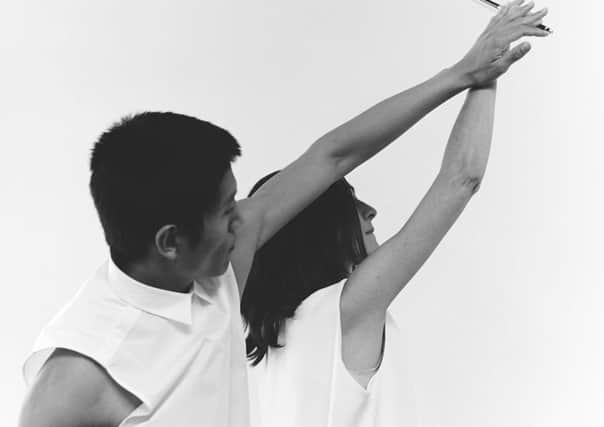Theatre review: Scottish Ensemble and Anderson Dance, Tramway, Glasgow


Scottish Ensemble and Andersson Dance
Tramway, Glasgow
Rating: ***
Taking a piece of 18th-century classical music and intertwining it with 21st-century contemporary dance. Not just in the usual way – musicians in the pit, dancers on stage – but fully integrated in a theatrical space, blurring the line between art forms. My hopes, therefore, were high.
A promising start found the 11 musicians of the Scottish Ensemble, and five dancers of Sweden’s Andersson Dance, standing motionless on stage, staring at the audience. The smart clothes of the concert hall replaced by casual jeans, T-shirts and pumps; the music stands and sheet music swapped for iPads.
Advertisement
Hide AdAdvertisement
Hide AdSo far, so interesting. Stepping forward, an Andersson dancer introduces the first section. Bach’s Goldberg Variations, known predominantly as a work for harpsichord but here performed on strings, is about to get a makeover. The music starts – a sprightly, life-affirming variation which the dancer matches note for note. His body freewheeling around the stage in an expression of pure joy, tapping a fellow dancer to bid them join in, then another – until a stamp of the foot signals an invitation for everyone to dance. Violins and violas in hand, the musicians throw themselves into the action with abandonment; even the double bass player, although fixed to the spot, is giving it laldy with her head.
From there, however, the work starts to feel increasingly like a parody of 1960s postmodern dance. You can almost imagine the rehearsal conversation, where a list of bizarre, obscure actions was drawn up to pepper throughout the show. Most of which feels totally pointless – and if it isn’t, then it’s horribly esoteric, which is even worse.
A dancer walks across the stage with two bowls in her hand, performs a half backward roll, then walks off again. Another stands centre stage with a shoe wedged in his mouth. One sits on a ladder, facing the back wall; another repeatedly falls forwards on to a row of yellow cushions.
If this was all happening 50 years ago, when notions of what constitutes dance were first being deconstructed, they might have triggered a frisson of excitement. Now, it just made me annoyed at the waste of talent.
Because there is a huge amount of it on-stage. The Scottish Ensemble is, as always, wonderful. The dancers, too, have real skill and emotional integrity but are given so few chances to prove it.
During one variation, they move in slow motion, five bodies climbing over each other in a display of strange beauty and connection. A powerful male solo also offers a glimpse of brilliance, but is juxtaposed with chatter at the side of the stage – which serves only to distract, not shake things up.
At one point, in an attempt at humour, a dancer says: “This is an ordinary walk. I don’t know why I’m doing it”. Sadly, the same could be applied to most of this show.